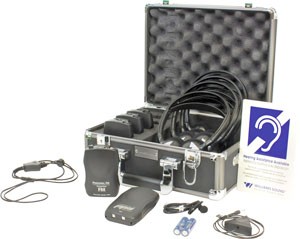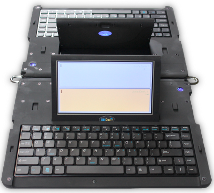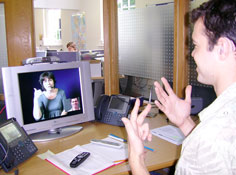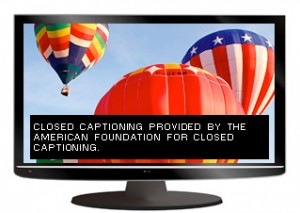
 The Third Case Study
The Third Case Study
Overcoming Technical Difficulties
A public health nurse goes to the home of a client for the first time who is beginning home care for diabetes. The client is a 72 year old male and the appointment was arranged by client’s adult daughter.
When the nurse arrives at the home, the adult daughter answers the door and brings the nurse into the living room where the client is waiting. The nurse sits down and begins to ask some preliminary questions. The client frequently asks to have a question repeated and several times turns to his daughter to ask her to clarify a question.
After several minutes of this, the nurse asks the client if he has any issues with his hearing and the client replies that he does. That he is no longer able to use the telephone or hear the doorbell. The daughter shares that this has become quite a frustration for the family and wonders if the nurse can help with that in addition to the care for diabetes.
What resources and ideas should the nurse share with the client and his daughter?
Understanding Assistive Technology
This situation introduces another aspect of service to consider in working with patients who are deaf or hard of hearing: assistive technology. People may use a variety of assistive devices to communicate and live independently.
A Response for the Client
If in your work, you encounter a client who has a hearing loss but does not have the resources to accommodate that lost, here are some suggestions to address that:
- Have them contact the Minnesota Department of Human Services ~ Deaf and Hard of Hearing Services Division. DHHSD has a variety of resources to assist clients in navigating the realities of having a hearing loss. They can offer
- Suggestions for having hearing tested
- Assistive Technologies that may be appropriate
- DHHSD offices have samples of assistive devices that can be borrowed to see if they are helpful prior to purchasing them.
- Consultant services to give other ideas for how to promote a vibrant and independent life
- Community events and activities that can help connect the client to other people who have a hearing loss and reduce social isolation
The Rationale Behind this Response
The best entry point to resources is Minnesota’s Department of Human Services ~ Deaf and Hard of Hearing Services Division (DHHSD) for referral to resources. DHHSD has knowledgable consultants who can assist clients in finding resources that are suited to their needs. Additionally, there are resources on assistive technology services including telephone and other environmental needs.
Here are some potential assistive technology that you may encounter:
- Face to Face
- For the Phone
- Videophone (video relay service)
(Generally for sign language users, this service employs video relay interpreters. The interpreters will be able to see the Deaf person on the videophone and can speak to the hearing person on a voice call. When the Deaf person signs something, they interpret that information in spoken English to the hearing person. When the hearing person speaks, they interpret that information into sign language for the hearing person.) A variety of companies provide this video relay service.
- Amplified headset
- Captioned telephone (captel) and Captioning Apps for Smartphones and Computers
These are generally for someone whose first language was English. This is a specially designed phone that allows for the person with the hearing loss to speak directly to the person they want to call. But the hearing person’s speech is typed out by a special operator.
- TTY or TDD:
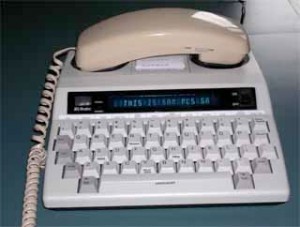 A text telephone that allows people to send a typed message through the phone service. There is a relay service that allows people to type a message on their TTY/TDD to the Communication Assistant (CA) who reads that message to the hearing person through a voice call. The CA then types what the hearing person speaks on the phone so the deaf/hard of hearing person is able to read what is being said by the hearing person. TTYs/TDDs are used much less now that other technologies are available.
A text telephone that allows people to send a typed message through the phone service. There is a relay service that allows people to type a message on their TTY/TDD to the Communication Assistant (CA) who reads that message to the hearing person through a voice call. The CA then types what the hearing person speaks on the phone so the deaf/hard of hearing person is able to read what is being said by the hearing person. TTYs/TDDs are used much less now that other technologies are available.
- Videophone (video relay service)
- For Video or Television
Generally, you might expect people with different identities to use different accommodations. For example, someone who is late deafened may be more likely to have a cochlear implant. A person who is hard of hearing may be more likely to use an amplified headset for a telephone, and a person who is deaf may be more likely to use a videophone so they can communicate in American Sign Language through a video relay service that has interpreters on call to interpret phone calls.
That said, individuals are unique and may use accommodations successfully that don’t fit with your expectations. Once again, it is important to ask the patient what works best for her or him.
. Once you do establish communication, however, it is clear why it is worth the effort.




